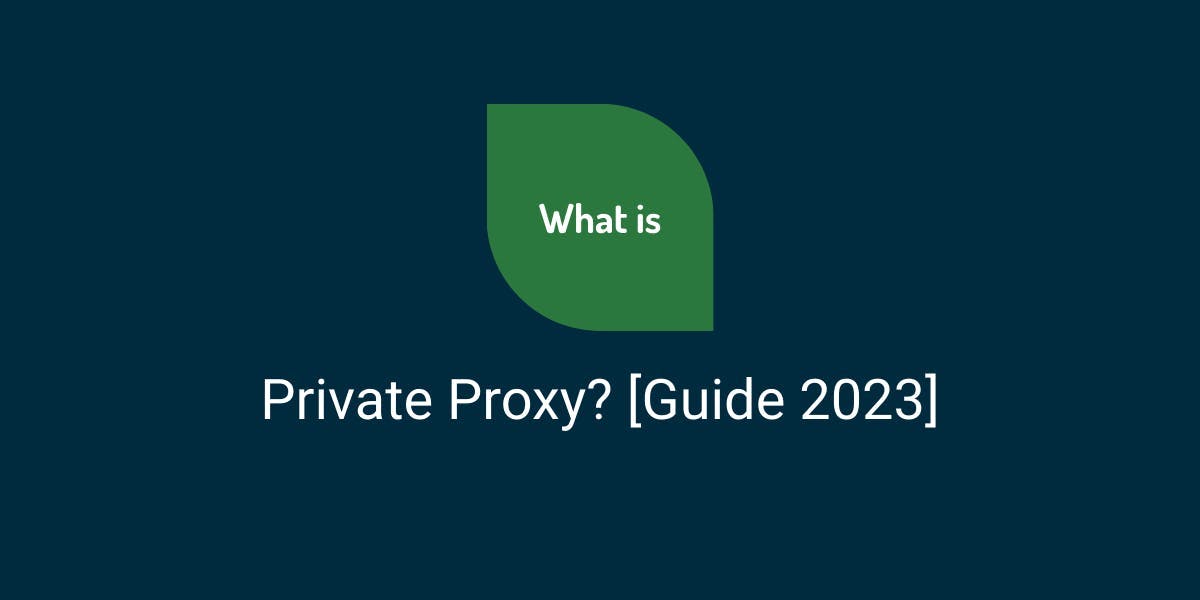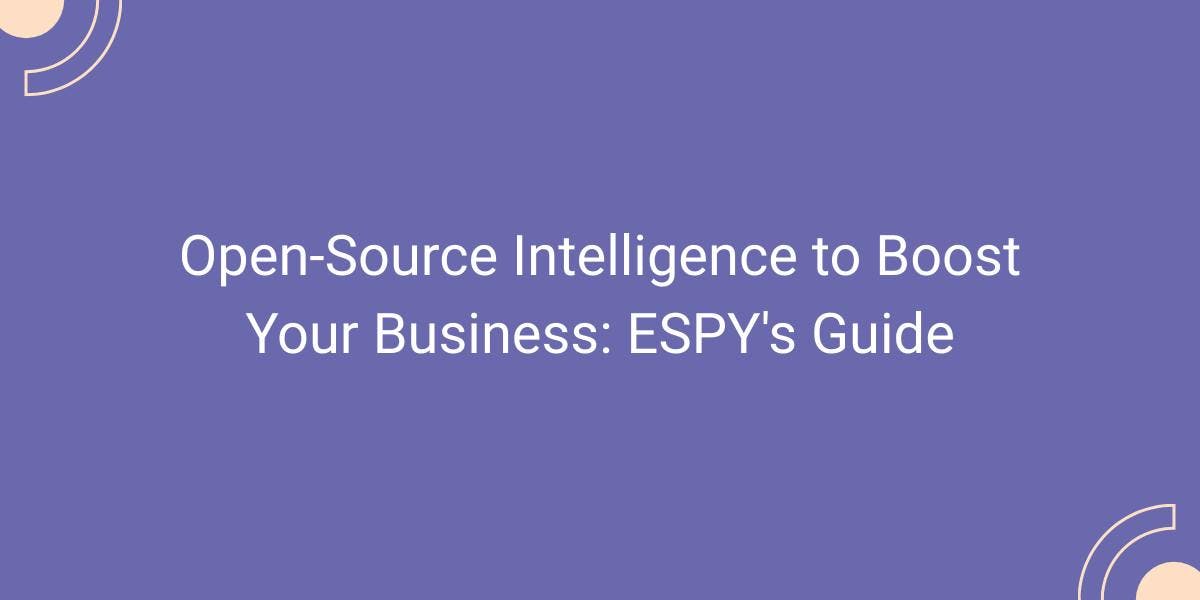Online Media Monitoring: Challenges and Solutions
Flipnode on May 24 2023

Online media monitoring is a valuable practice for businesses seeking to understand how their brand is perceived on the web. With the abundance of data available online, manually monitoring and gathering publicly available information from numerous websites can be time-consuming and prone to human error. To overcome these challenges, businesses often turn to online media monitoring tools and platforms.
These tools enable companies to efficiently collect and analyze publicly available data, providing their clients with the insights they need. However, the task of monitoring and collecting large volumes of data presents complex challenges for professionals in this field. If you're interested in learning more about the common issues faced in online media monitoring and discovering effective solutions, continue reading to explore how reliable web scraping solutions can enhance the online media monitoring process.
What is online media monitoring?
Online media monitoring is an essential practice that involves closely monitoring and analyzing various forms of media, including print, online, and broadcast. By meticulously examining a wide range of media platforms on the internet, media monitoring serves the purpose of identifying trends and offering valuable insights for political, commercial, or scientific endeavors.
How does online media monitoring work?
Online media monitoring companies provide dedicated platforms for their clients, allowing them to input specific search terms such as a brand name, and retrieve comprehensive information about its media mentions. The data gathered from online media sources holds significant commercial and scientific value, enabling businesses to gain insights into their brand's reputation, market perception, and relevant industry trends.
How can online media monitoring help businesses?
Online media monitoring offers numerous use cases that can significantly improve a company's performance:
- Brand Monitoring: Online media monitoring companies offer brand monitoring services to scrape mentions of clients' brands on the internet. This helps businesses increase brand awareness and track their online media coverage, ultimately contributing to brand protection and reputation management.
- Crisis Management: Real-time online media monitoring enables businesses to track brand mentions and promptly respond to any publications that could impact their brand reputation. By identifying negative mentions early on, companies can develop effective strategies to address and mitigate potential crises.
- Audience Insights: Social media monitoring and data gathering from blogs and forums allow companies to gain a deeper understanding of their target audience. Online media monitoring tools provide publicly available information about the audience's preferences, interests, and sentiments, helping businesses tailor their marketing strategies and communication efforts accordingly.
- Competitive Analysis: Monitoring online media sources enables businesses to stay ahead of their competitors by monitoring their digital activities. Through publicly available data, such as search engine results page (SERP) data, companies can track industry trends, competitor strategies, and market dynamics, allowing them to make informed decisions and gain a competitive advantage.
- Market Research and Insights: Monitoring online media sources helps companies stay informed about market trends, consumer preferences, and industry developments. By analyzing media mentions, companies can identify emerging trends, consumer demands, and changing market dynamics, enabling them to make data-driven decisions and adapt their products or services accordingly.
Types of media monitoring
With the variety of media channels available in the modern landscape, online media monitoring can be categorized into different types based on the specific mediums being monitored. These types include:
Print media monitoring involves tracking and analyzing printed materials such as magazines, newspapers, and periodicals. Despite the declining popularity of print media, it still holds value for businesses, making print media monitoring a valuable practice. By monitoring print media, companies can gain insights into brand reputation, public relations, and customer communication, tailored to their target audience and industry.
Broadcast
Broadcast media monitoring focuses on tracking mentions and coverage on television and radio. This type of monitoring allows businesses to stay informed about their brand's reputation in the broadcasting realm. Custom reports from media analysts or monitoring experts provide valuable metrics, trends, market perception, and other relevant information related to on-air coverage.
Digital and social media
Digital and social media monitoring involves tracking and analyzing media coverage on public websites, blogs, online news platforms, forums, and social media networks. With the dominance of digital platforms as a source of information, investing in digital and social media monitoring is crucial. It provides real-time insights into current trends and a deeper understanding of how the target audience perceives a company, its products, or services. This type of monitoring enables businesses to stay up to date with online impressions and make informed decisions based on the collected data.
Who should use media monitoring?
In essence, any business that values its public interactions, reputation, and market position should consider leveraging media monitoring tools as part of its operations. While the scope extends beyond these, here are some specific types of businesses that can greatly benefit from online media monitoring:
- Consumer Brands: Businesses that offer consumer products or services can monitor online media to track customer feedback, identify emerging trends, and manage their brand reputation.
- Public Relations and Communication Agencies: PR and communication agencies can use media monitoring to track media coverage of their clients, evaluate campaign effectiveness, and gather insights for strategic planning.
- E-commerce and Online Retail: Online businesses can monitor media channels to gather customer feedback, monitor competitors, and identify market trends to optimize their product offerings and marketing strategies.
- Hospitality and Travel: Companies in the hospitality and travel industry can monitor media platforms to track customer reviews, assess the sentiment surrounding their brand, and identify areas for improvement.
- Financial Institutions: Banks, investment firms, and other financial institutions can monitor media channels to stay informed about market developments, regulatory changes, and public sentiment towards the industry.
- Healthcare and Pharmaceuticals: Organizations in the healthcare sector can monitor media sources to keep track of public health issues, monitor reputation, and stay updated on industry news and trends.
- Non-profit Organizations: Non-profit organizations can leverage media monitoring to monitor public sentiment towards their cause, track media coverage of their initiatives, and measure the impact of their campaigns.
- Government Agencies: Government agencies can use media monitoring to stay informed about public opinion, track media coverage of policies and initiatives, and assess public sentiment towards governmental activities.
Remember, these are just a few examples, and media monitoring can benefit businesses across various industries by providing valuable insights, enhancing reputation management, and enabling proactive decision-making.
Web scraping for online media monitoring
Online media monitoring companies offer their clients specialized tools designed to deliver the necessary data for monitoring purposes. Instead of relying on thousands of employees manually browsing through online mentions 24/7, these companies leverage automated scrapers to gather vast amounts of data within seconds. However, it's important to note that this process is not without its challenges and complexities.
Web scraping poses several challenges for online media monitoring companies. Understanding these challenges helps us grasp the complexity of their work:
- Scraping diverse data sources: Online media monitoring companies must navigate the intricacies of gathering information from a multitude of websites. Each website has its own unique structure, security measures, and features, including dynamic JavaScript content. Finding a one-size-fits-all solution is unlikely, so these companies invest time in testing, searching, and adapting to the best available options.
- Restricted geo-locations: Certain media coverage may only be accessible from specific geographical locations, necessitating significant resources to track publicly available data across multiple websites. It is well-known that the same content can appear differently or be completely unavailable in different countries. Online media monitoring companies must address this challenge to ensure that their clients receive comprehensive information regardless of geo-location.
- Real-time information gathering: Delivering high-quality, real-time data without errors is crucial for online media monitoring companies. If clients need to swiftly address negative feedback or reactions about their brand, products, or services, they rely on timely customer reviews. Thus, review monitoring becomes an integral part of effective brand management.
- Scalability of data collection: To provide data to their clients, online media monitoring companies must collect and process vast amounts of information from numerous websites. Their tools must be capable of handling large-scale data processing quickly and efficiently. Dependable services are contingent on their ability to handle massive volumes of data. For further insights on this topic, you can refer to an extensive article that explores the main challenges of web scraping at a larger scale, particularly in the e-commerce industry. While the article focuses on e-commerce, the principles apply to other industries as well.
- Data source security measures pose a significant challenge for online media monitoring companies, as well as any businesses engaged in web scraping. Websites often implement security measures to protect against malicious bots, but this can inadvertently impact legitimate web scraping bots. Here are some common security measures encountered:
- IP blocks: Websites may block or restrict access to IP addresses that send a large number of requests, as they are often considered abnormal behavior. Since web scraping tools generate multiple requests, if they all originate from the same IP address, they may trigger IP blocking mechanisms.
- CAPTCHAs: CAPTCHAs are tests designed to differentiate between human users and bots. They often require users to solve puzzles or identify objects in images. Many web scraping tools struggle to bypass CAPTCHAs, leading to blockages. Advanced web scraping tools may possess the capability to handle CAPTCHAs effectively.
Additionally, websites collect specific information from users' browsers, such as operating systems, language, plugins, and hardware. To avoid being flagged and blocked by target websites, web scraping tools must mimic this information accurately. Browser fingerprinting is an important aspect to understand in this context. Further insights on browser fingerprinting can be found in our other articles.
Being blocked by target websites hinders the ability of online media monitoring companies to provide comprehensive information to their clients, limiting the effectiveness of their services.
Web scraping solutions for online media monitoring
Web scraping solutions play a crucial role in enabling online media monitoring companies to gather and analyze vast amounts of data from various online sources. These solutions provide the necessary tools and techniques to automate the process of data extraction, allowing companies to efficiently monitor and track media mentions, trends, and insights. Here are some key aspects of web scraping solutions for online media monitoring:
- Customized Scraping Tools: Online media monitoring companies often develop or utilize customized web scraping tools tailored to their specific requirements. These tools are designed to navigate websites, interact with different data structures, handle security measures, and extract relevant information effectively. Customized tools can provide a more precise and targeted scraping approach, ensuring accurate and comprehensive data collection.
- Advanced Scraping Techniques: Web scraping solutions employ advanced techniques to overcome common challenges faced in media monitoring. These include handling dynamic websites that rely heavily on JavaScript or AJAX, bypassing CAPTCHAs, rotating IP addresses, and managing session persistence to avoid detection and blocking. These techniques help ensure seamless and uninterrupted data collection from diverse online sources.
- Data Quality and Cleansing: Reliable web scraping solutions incorporate mechanisms to ensure data accuracy and quality. This involves removing duplicates, standardizing data formats, and performing data cleansing processes to eliminate irrelevant or misleading information. Data validation techniques may also be implemented to verify the accuracy and consistency of collected data.
- Scalability and Performance: Efficient web scraping solutions are designed to handle large-scale data extraction. They employ strategies to optimize performance and manage resources effectively, allowing online media monitoring companies to scrape data from multiple websites simultaneously and process large volumes of data in real-time.
Conclusion
Online media monitoring companies face numerous challenges in their daily task of scraping large volumes of publicly available data. To tackle these challenges, they rely on reliable proxies and high-quality data extraction tools, which play a vital role in facilitating the process. However, selecting the most suitable media monitoring tools remains a crucial task for companies in this field, requiring extensive testing and evaluation to determine the optimal solution.



